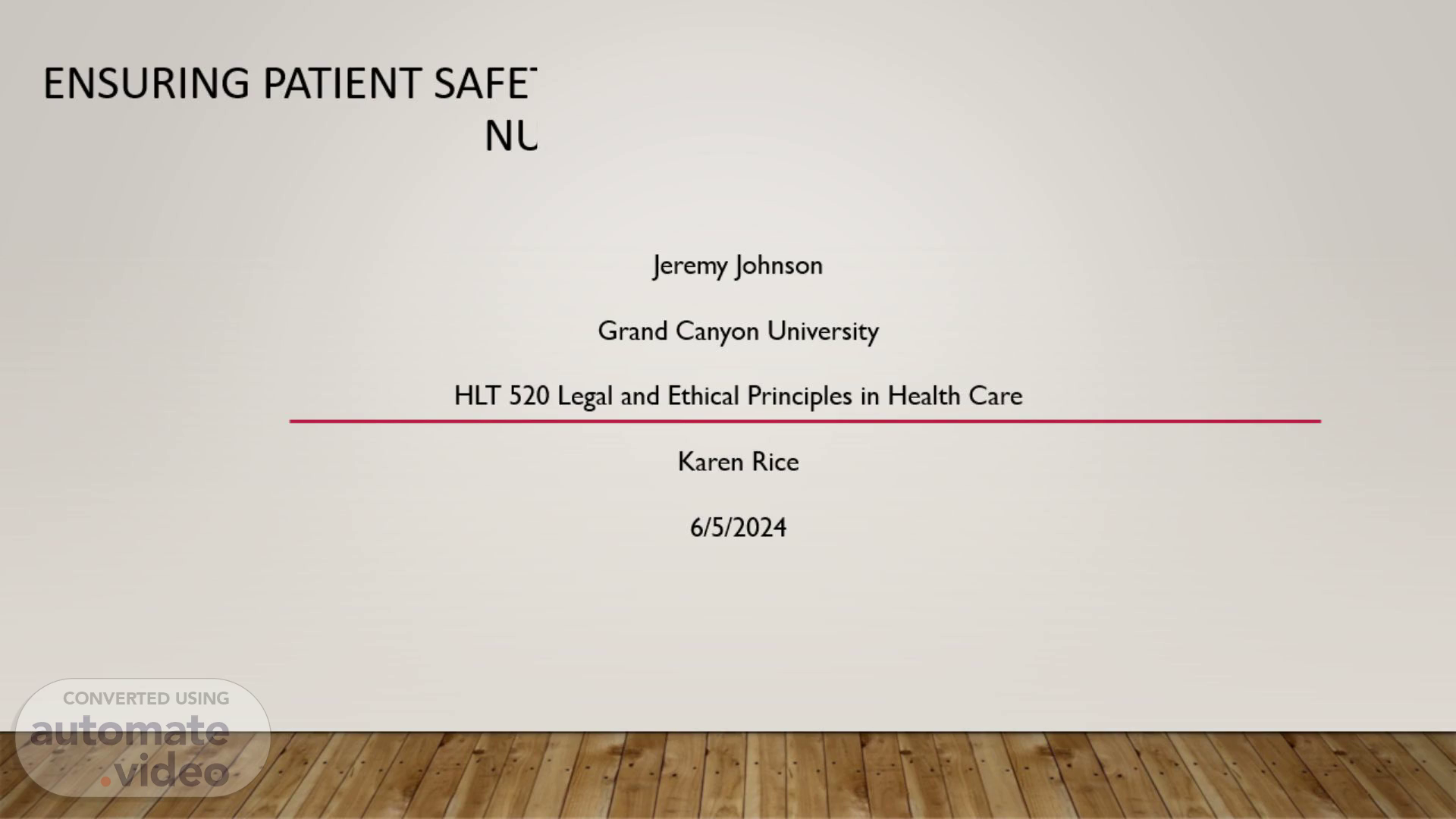
Page 1 (0s)
Ensuring Patient Safety: Addressing the Crisis of Inadequate Nurse Staffing Ratios.
Page 2 (12s)
Purpose. Provide Awareness of the Current State of Affairs Describe the Impact on Patient Outcomes Describe Benefits of Adequate Nurse -to- Patient Ratios Explain Community Support Needed.
Page 3 (23s)
[Audio] Staffing levels are important to working conditions and are a determinant of access, quality, and outcomes. With the addition of 1 extra patient per nurse, the rise in premature death rises 7% (Polgreen, 2023). The administration team refuses to collaborate to set ratios According to a National Healthcare Quality report, one-third of the quality indicators for patient safety have not changed or worsened in the last decade (West et al., 2012). The majority of labor negotiations revolve around pay increases or salary increases. This, however, is a request to commit to set ratios to reduce workload and increase patient safety and quality of care (Polgreen, 2023). The hospital is willing to replace nurses from this community with outsiders who will comply with the working conditions before hiring. The administration has no legal, federally binding forces that require them to collaborate with staff on ratios; rather, they can unilaterally dictate working conditions and ratios as they see fit. These are typically financially motivated since nurses make up the majority of the labor costs ( Powell Stuart, 2024)..
Page 4 (1m 37s)
[Audio] Higher ratios lead to an increase in the odds of pneumonia post-surgery. Couple that with wound infections or sepsis, patients significantly have a higher likelihood of death during hospitalization (Cho et al., 2003). Men were at increased risk of pressure ulcers, pneumonia, wound infections and sepsis Females had higher rates of UTI's Research shows higher nurse-patient ratios have higher rates of death overall, increase in death following complications, and increase in adverse events (West et al., 2012). Hospitals with shifts staffed below targeted levels had higher patient mortality rates (West et al., 2012). Higher nurse-to-patient ratios lead to an increase in the number of needle sticks that occur (West et al., 2012). Higher nurse-patient ratios lead to increased length of stays, especially for major surgical procedures, along with increased mortality and costs (Cho et al., 2003). a.
Page 5 (2m 44s)
[Audio] Nurses are patient advocates and it is their duty to protect patients from adverse events and thus will adequate ratios this incrase in quality care by prevention is paramount (Cho et al., 2003). Research shows that better staffing ratios can prevent approximately 4,000 deaths and save up to 700 million dollars in medical cost over a two year period (Polgreen, 2023). Reduction in nurse to paitnet ratio by even 1 patient can lead to redcued patient mortality, readmission, and reduced length of stay ( Powell Stuart, 2024). Mandatory Staffing ratios have can reduce length of stay by up to 48 hours in some cases thus allowing paitentes to achieve care goals and early discharge leading to incrased patient satisfaction (Powell Stuart, 2024). Better ratios not only reduce cost by reducing length of stay but also by reduicing readmissions which are around twice the savings as the cost of the staffing costs ( Powell Stuart, 2024). A.
Page 6 (3m 55s)
[Audio] Enlisting the crucial support of state and federal governments to mandate maximum patient-to-nurse ratios is a measure that could significantly enhance safety and quality in healthcare settings (Costa & Friese, 2022). Enlisting Federal and State agencies such as the Agency for Healthcare Research and Quality and the National Institute for Occupational Safety and Health could provide grants and research needed to ensure best practices and ratios are occurring to increase patient safety (Costa & Friese, 2022). Implementing hospital infrastructure changes to support units that allow for better patient care design, power movers, electric stretchers, and technology at the bedside could increase nurses' functional capacity ( Powell Stuart, 2024). Increasing Nurses' autonomy to function in the interprofessional healthcare environment is key to ensuring their engagement and efficiency are part of an organization's pillars of success (Powell Stuart, 2024)..
Page 7 (5m 1s)
[Audio] Engaging community support is vital Using social media to spread key messages and garner support Enlisting legislators and Attending legislative committee meetings.
Page 8 (5m 19s)
REferences.